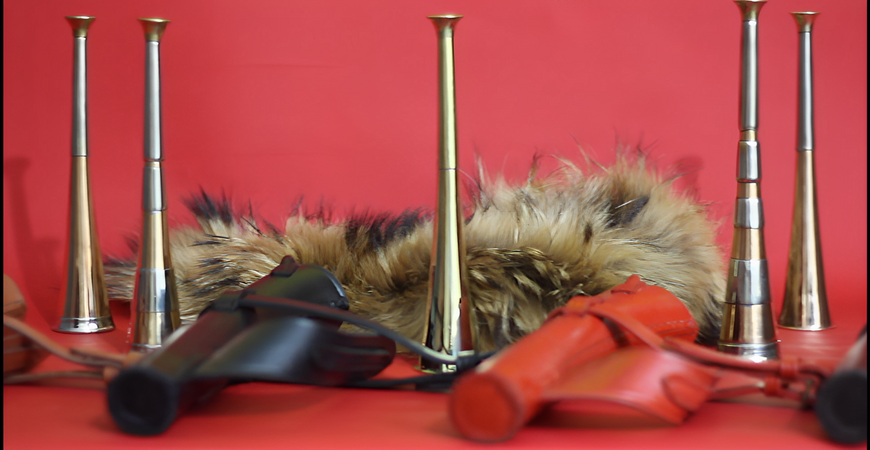Why the Fox Hunting Horn Still Matters Today
Posted by The Green Tanners on 17th Sep 2025
The fox hunting horn holds a special place in traditional hunting. It is not just a tool, but a symbol of history, craftsmanship, and cultural heritage. Whether it's used for communication across vast hunting grounds or to celebrate the camaraderie among participants, this iconic instrument continues to be a significant part of the hunt today.
What Is the History of the Fox Hunting Horn?
Originating in 16th-century England, the hunting horn was first embraced by the nobility during organized hunts. These hunts were a combination of sport and social gathering, where participants showed off their riding skills while reinforcing community bonds. Over time, it became essential for coordinating movements and signaling changes during hunts.
How Does the Fox Hunting Horn Work During a Hunt?
The fox hunting horn functions as a communication tool. It uses specific notes to relay key information to hunters, such as:
- Signaling the start of the chase
- Indicating a change in direction
- Warning of obstacles
- Celebrating the successful conclusion of a hunt
This system of calls ensures seamless coordination and adds a sense of elegance to the pursuit, keeping everything in sync.
Is the Fox Hunting Horn Relevant in Modern Hunts?
Despite technological advances in hunting tools, the fox hunting horn remains an essential part of many hunts today. It helps preserve the traditions and cultural significance of the sport, providing a connection to its roots while still serving a functional purpose. For modern hunters, incorporating it into the hunt adds authenticity and a deep sense of heritage.
What Makes Fox Hunting Horns Unique?
Crafted with precision, these horns are made from high-quality materials such as brass or copper, which help produce resonant tones that carry across long distances. The craftsmanship ensures the horn's sound is clear and effective, whether in dense woods or vast fields. The shape of the mouthpiece and careful tuning also contribute to its high functionality and aesthetic value.
How Does the Fox Hunting Horn Contribute to Tradition and Ritual?
Beyond its practical use, the fox hunting horn symbolizes the rituals and cultural practices that have been passed down for generations. The haunting sound of the horn marks significant moments during a hunt, fostering discipline, unity, and a shared sense of purpose among hunters. These calls, from the beginning of the chase to the celebratory end notes, encapsulate the spirit of the hunt.
How Does the Fox Hunting Horn Benefit Hunters Today?
- Effective Communication: Ensures clear signals over vast distances.
- Cultural Preservation: Helps maintain the traditions and values of hunting.
- Artistry: Showcases the quality and durability of finely crafted instruments.
- Symbolism: Embodies the elegance and historical significance of fox hunting.
FAQs About Fox Hunting Horns
Can the fox hunting horn still be used in modern hunts?
Yes, the fox hunting horn is still widely used in modern hunts to honor tradition and facilitate communication during the chase.
What materials are fox hunting horns made of?
Typically, fox hunting horns are crafted from materials like brass and copper, which produce clear, strong sounds that can be heard across large distances.
How do hunters learn to use a fox hunting horn?
Learning to play the horn requires practice, as each note has a specific meaning. With time and training, hunters can master the calls needed to signal different stages of the hunt.
Are there different types of hunting horns?
Yes, hunting horns come in various styles and designs, each catering to different preferences and hunting needs.
Does the fox hunting horn have ceremonial value?
Absolutely. The horn is not only a functional tool but also a central part of hunting rituals, marking key moments during the hunt and celebrating the tradition of fox hunting.
Read more: 5 Reasons Hunting Flasks Are a Must for Every Hunter


